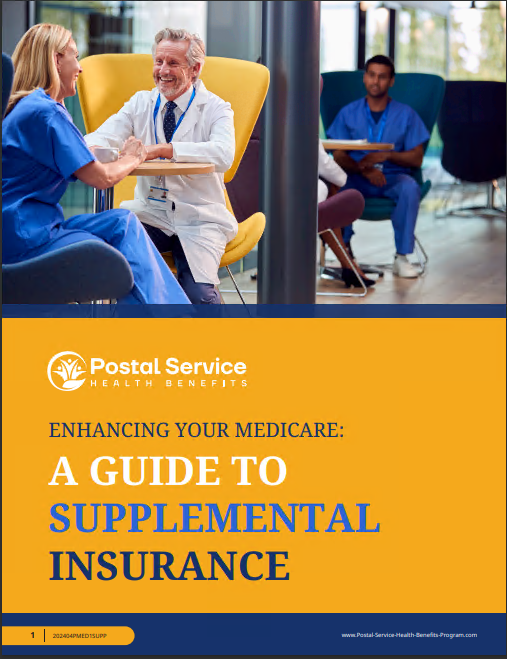Key Takeaways
-
Medicare Part B in 2025 provides strong coverage for preventive services, outpatient care, and doctor visits, but you still face deductibles, coinsurance, and potential service limits.
-
Even with Medicare Part B and PSHB working together, budgeting for out-of-pocket expenses remains essential to avoid unexpected financial strain.
The Basics of Medicare Part B Coverage in 2025
Medicare Part B plays a central role in covering your outpatient medical needs. As a Postal Service Health Benefits (PSHB) enrollee, understanding what Part B does and does not pay for is key to planning your healthcare budget effectively.
Part B covers medically necessary services and supplies needed to diagnose or treat a medical condition. It also covers preventive services to help prevent illnesses or detect them early. Some of the major areas Medicare Part B covers include:
-
Doctor visits, including specialists
-
Outpatient surgeries and procedures
-
Preventive screenings (like mammograms and colonoscopies)
-
Durable medical equipment (wheelchairs, walkers)
-
Mental health outpatient services
-
Certain home health services
-
Some prescription drugs administered by a healthcare professional
While this list looks impressive, coverage is not absolute. You share costs through premiums, deductibles, and coinsurance.
General Costs You Should Expect in 2025
In 2025, the standard monthly premium for Medicare Part B is $185. However, if your income exceeds certain thresholds, you may pay an Income-Related Monthly Adjustment Amount (IRMAA).
Beyond the premium, you face:
-
Annual deductible: $257
-
Coinsurance: Typically, you are responsible for 20% of Medicare-approved amounts for most services after you meet your deductible.
Having PSHB coverage can reduce some of these costs, but it does not eliminate them entirely. Many PSHB plans coordinate benefits with Medicare, paying some or all of the coinsurance or deductibles, but this varies by plan.
Preventive Services Covered at No Cost
Medicare Part B is particularly strong in preventive care, helping you catch health problems early. Covered preventive services include:
-
Annual wellness visits
-
Cardiovascular screenings
-
Diabetes screenings
-
Vaccinations like influenza, hepatitis B, and COVID-19
-
Cancer screenings (e.g., lung, breast, prostate, cervical)
If the provider accepts Medicare assignment, you typically pay nothing for these preventive services.
What You Still Need to Budget For
Despite robust coverage, Medicare Part B leaves gaps that you must plan for carefully.
1. Outpatient Services Coinsurance
After the deductible, you usually owe 20% coinsurance for services like physical therapy, outpatient surgeries, or diagnostic imaging.
If you receive services in a hospital outpatient setting, an additional facility charge may apply, increasing your out-of-pocket costs.
2. Durable Medical Equipment (DME)
While Part B covers durable medical equipment, you are still responsible for 20% of the Medicare-approved amount. Equipment like oxygen supplies, wheelchairs, or CPAP machines can lead to considerable expenses if not managed carefully.
3. Home Health Care Beyond Medicare Limits
Medicare Part B covers certain home health services if you meet strict eligibility requirements. However, if you need more extensive services than Medicare deems medically necessary, you must cover those additional costs.
4. Mental Health Services
Medicare Part B covers outpatient mental health services such as therapy and psychiatric visits, but you pay 20% coinsurance after meeting your deductible. Services like intensive outpatient programs may involve higher out-of-pocket charges.
5. Prescription Drugs Administered in a Clinical Setting
Medicare Part B covers certain medications given by infusion or injection in a clinical setting. However, after the deductible, you must pay 20% of the medication’s Medicare-approved amount, which can be significant depending on the drug.
Situations Where You Might Pay More
Understanding when additional costs arise is crucial to protecting your financial health.
1. Choosing Providers Not Accepting Medicare Assignment
If your doctor or facility does not accept Medicare assignment, they may charge up to 15% more than Medicare’s approved amount, known as the “limiting charge.” You are responsible for this extra amount.
2. Receiving Services Outside the United States
Medicare Part B does not cover medical care outside the U.S. except in very limited circumstances. If you travel internationally, you may need to purchase separate coverage.
3. Using Outpatient Hospital Services
Hospital outpatient departments can bill separately for the facility and the professional service, often resulting in higher coinsurance compared to a free-standing clinic.
How PSHB Plans Interact with Medicare Part B
Postal retirees with PSHB coverage typically find their plan coordinates benefits with Medicare Part B. In many cases, your PSHB plan becomes secondary coverage, helping pay:
-
Remaining coinsurance
-
Deductibles
-
Excess charges
However, PSHB plans vary. Some may pay 100% of your Medicare-approved expenses after Medicare pays. Others may require additional copayments or coinsurance.
Make sure to review your PSHB plan’s Explanation of Benefits (EOB) and summary documents each year, especially during the November to December Open Season.
How Timing Matters for Part B enrollment
If you are a Postal Service retiree approaching age 65, you generally have a 7-month Initial Enrollment Period (IEP) surrounding your birthday to enroll in Medicare Part B without penalty.
If you miss this window, you may only enroll during the General Enrollment Period from January 1 to March 31 each year, with coverage starting July 1. Missing your IEP can result in permanent late penalties, increasing your Part B premiums by 10% for every full 12-month period you delay enrollment.
Fortunately, PSHB enrollees retiring before January 1, 2025, and not enrolled in Part B are generally exempt from mandatory enrollment requirements.
Special Coverage Considerations for High-Cost Treatments
Part B covers expensive treatments such as chemotherapy or dialysis, but the 20% coinsurance can add up quickly.
PSHB plans often step in to lower your portion of these costs. Nonetheless, budgeting for potential high-cost events is crucial, particularly if:
-
You require long-term specialty therapies
-
You anticipate multiple outpatient procedures
-
You have chronic conditions needing frequent care
Setting aside funds in a health savings account (if eligible) or maintaining an emergency medical fund can protect your financial stability.
Understanding Annual Spending Limits
Unlike PSHB plans, traditional Medicare does not have an annual out-of-pocket maximum for Part B services. This means:
-
If you have only Original Medicare (Parts A and B), your financial exposure is unlimited.
-
If you have PSHB secondary coverage, your plan may cap your annual out-of-pocket expenses.
Knowing your PSHB plan’s maximum can help you better anticipate worst-case scenarios.
Common Misunderstandings About Medicare Part B
Many postal retirees are surprised by these facts:
-
Preventive care is fully covered, but diagnostic follow-ups (e.g., a biopsy after a screening) usually require 20% coinsurance.
-
Doctor visit costs vary by location and facility type even within Medicare’s approved services.
-
Skilled nursing facility care is primarily covered by Part A, not Part B.
Clearing up these points helps you plan your medical and financial strategies more accurately.
Why Careful Coordination with PSHB Is Critical
Failing to coordinate your PSHB coverage with Medicare Part B can lead to claims being denied or higher-than-expected costs. Tips for smooth coordination include:
-
Ensuring your PSHB plan is aware of your Medicare enrollment
-
Always presenting both insurance cards when receiving care
-
Regularly updating your provider’s billing information
Final Thoughts on Planning Around Medicare Part B in 2025
Even though Medicare Part B offers wide-ranging outpatient protection, it is not complete coverage. As a PSHB enrollee, you benefit from the opportunity to enhance your Medicare benefits through your PSHB plan, but you must still budget for premiums, coinsurance, and unexpected services.
Careful review of your plan each year and proactive financial planning ensure you can manage healthcare costs without surprises.
If you have questions about how your PSHB plan works with Medicare Part B, or if you want help evaluating your out-of-pocket costs, reach out to a licensed insurance agent listed on this website.







